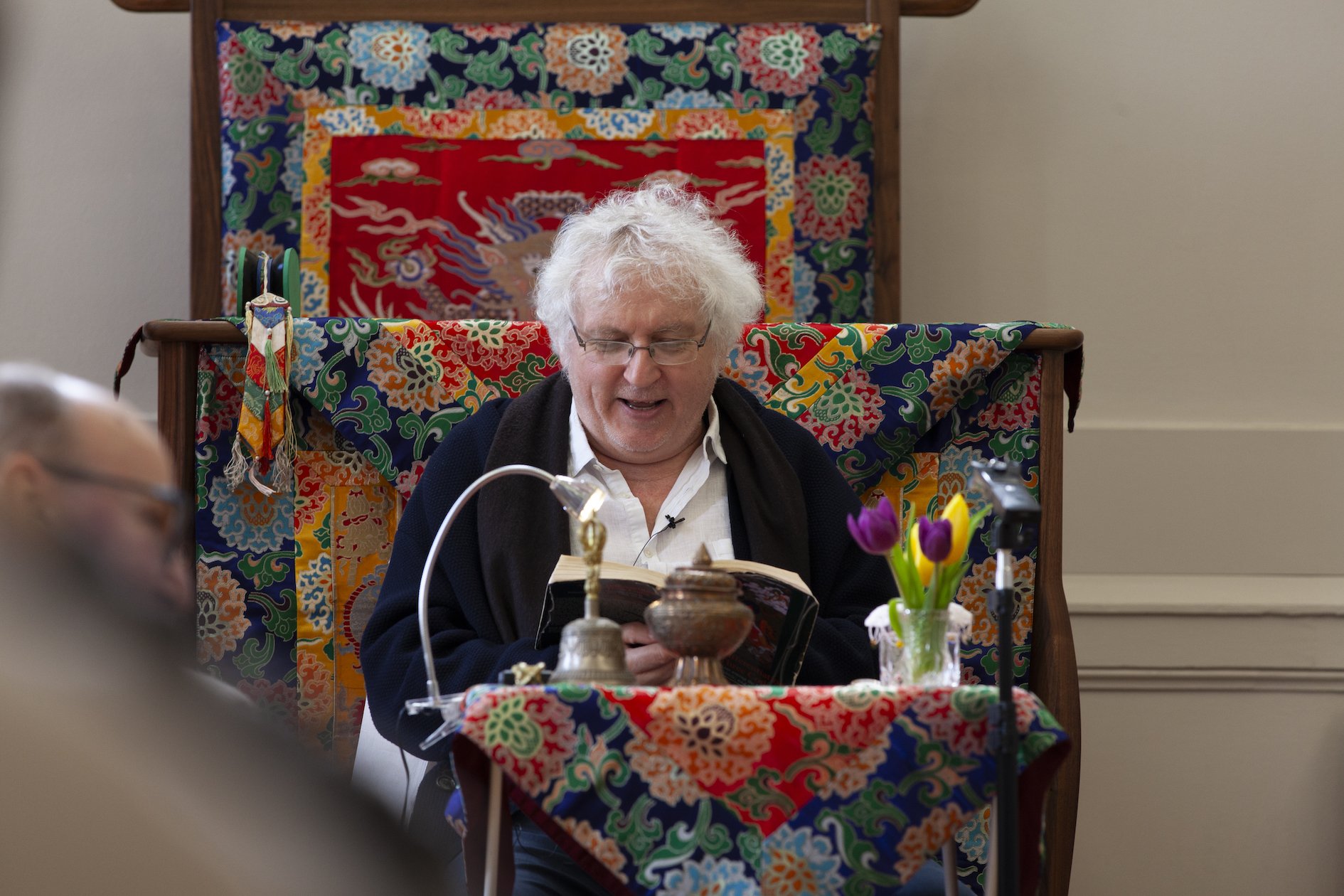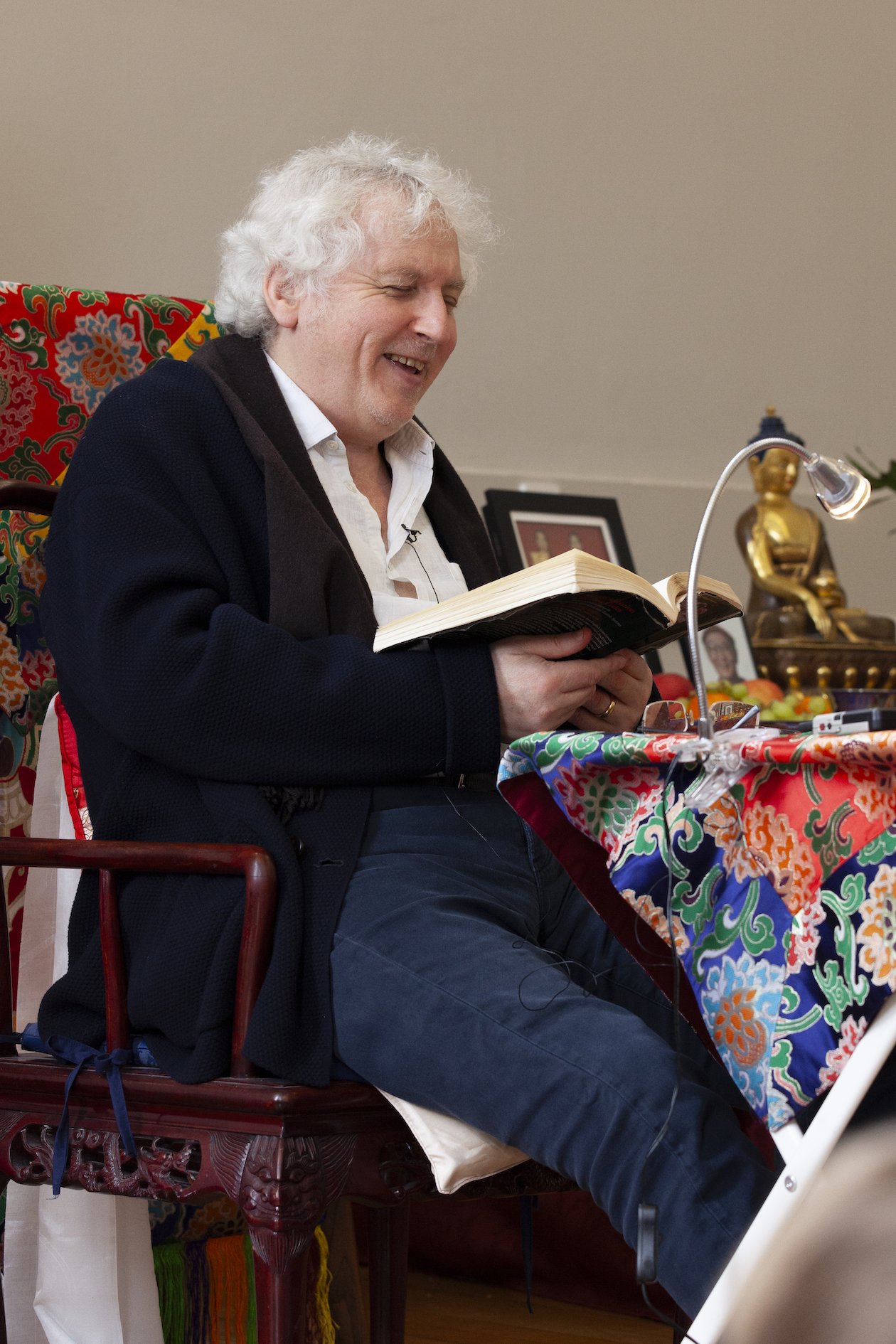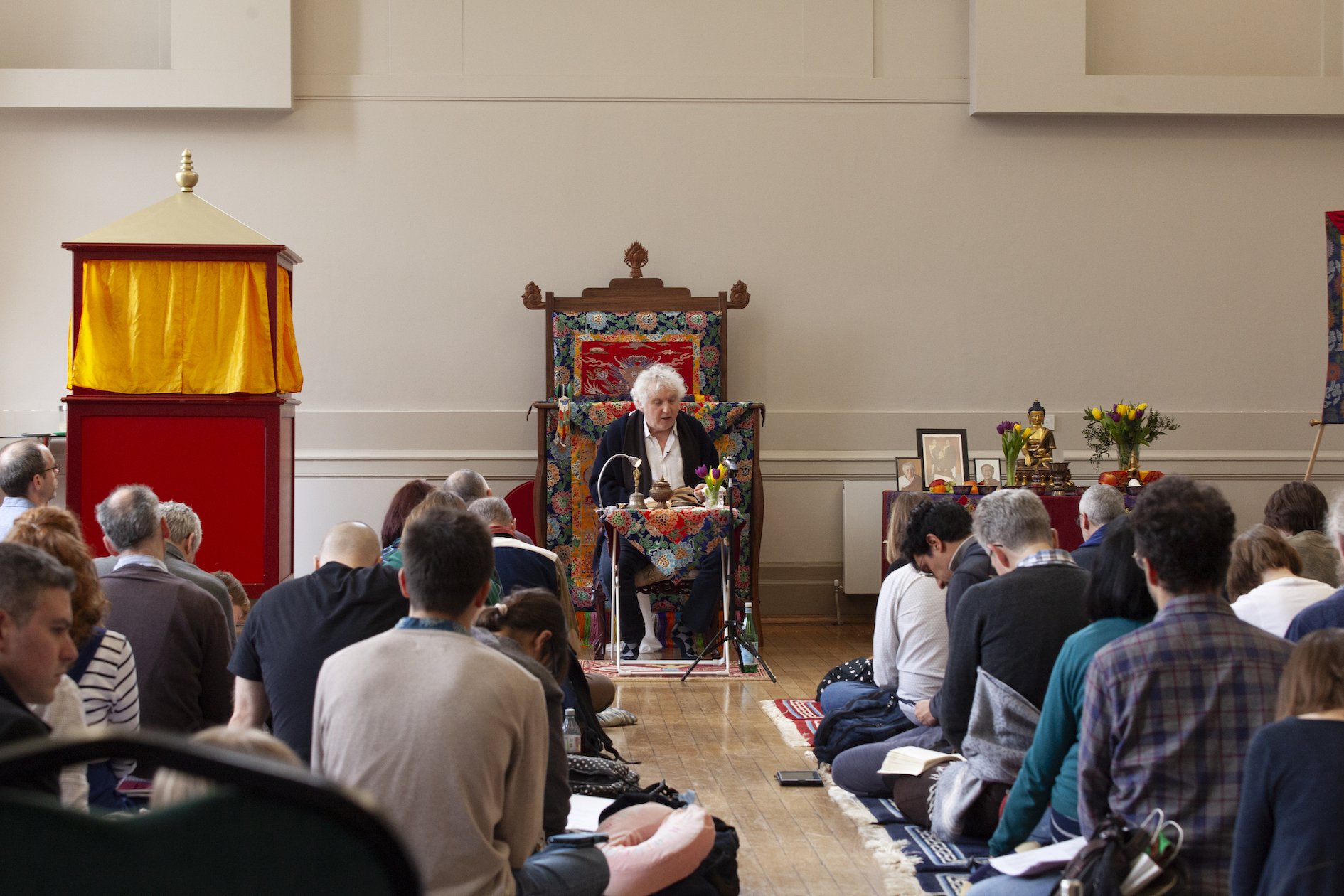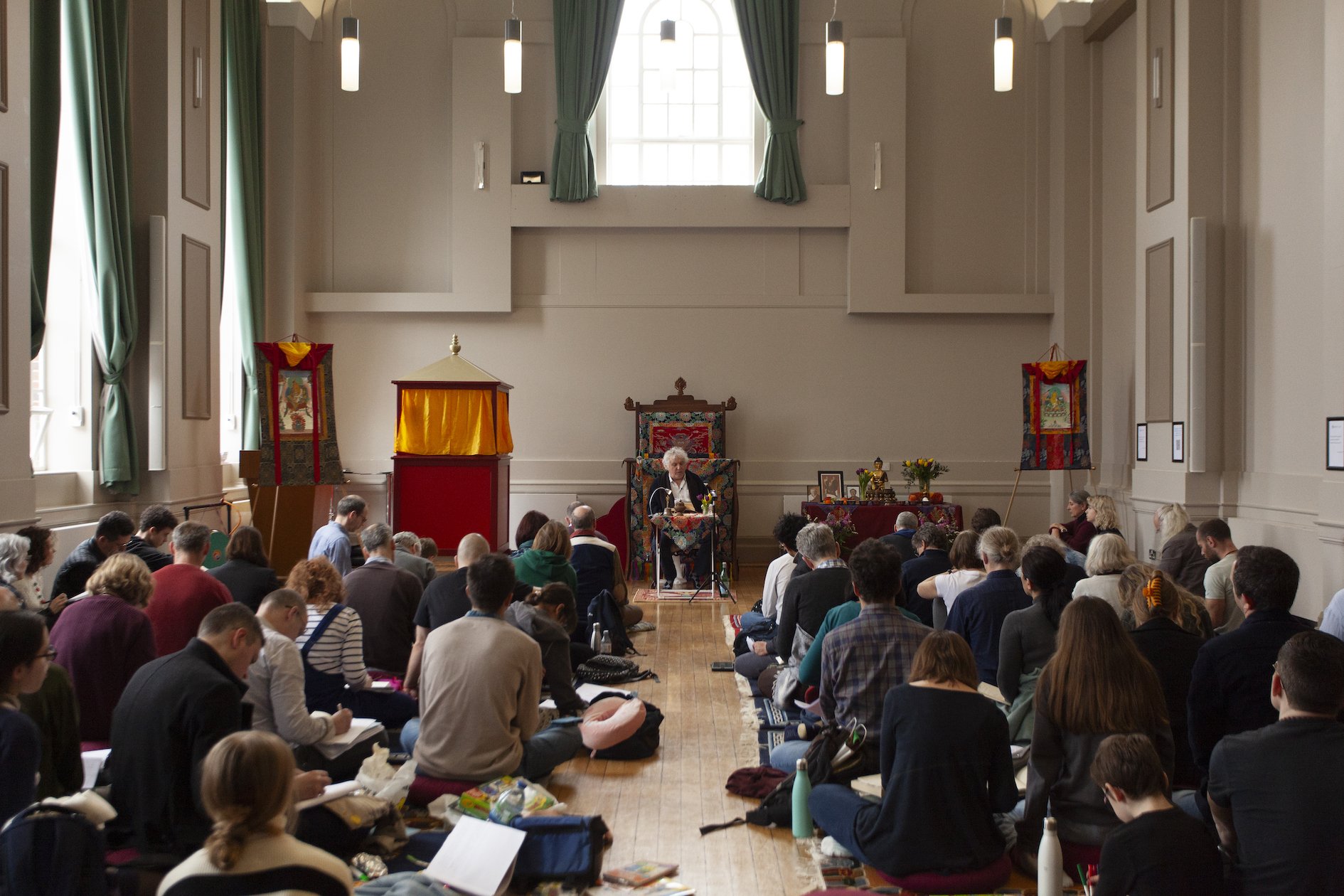Last Saturday, 16 March, having returned from the Karmapa International Buddhist Institute in Delhi, Lama Jampa Thaye gave a day of extraordinary vajrayana teachings in London. Hosted by Dechen London: Sakya Dechen Ling, the event took place in the elegant Herringham Hall, Regent’s University.
The morning’s teaching was a continuation of the DomSum, Sakya Pandita’s famous work ‘Discriminating the Three Vows’.
Lama Jampa began by highlighting the value of receiving and studying this work, as in it Sapan ‘covers all of the difficult points about the practice of the three vehicles.’
This section of the text continues with points concerning the practise of the vajrayana or indestructible vehicle. Lama Jampa introduced the text by reminding us that whilst the motivation (bodhichitta) and underlying moral discipline (the bodhisattva vow) of this uncommon mahayana are the same as the common mahayana, its methods are so powerful that we can use them to harness the very forces which seem to be an obstacle to the achievement of enlightenment. With the keys of the vajrayana we can transform this disturbed, defiled energy and focus it towards the achievement of buddhahood. As a result, when practised in accordance with the Buddha’s teachings, with this path it is possible to achieve enlightenment in this very lifetime, or at the most in 16 lifetimes. This is in comparison to the three incalculable aeons cited for the effective practice of the common mahayana. Hence it is in the interest of all beings for us to practise the vajrayana if we are able to.
Sapan’s root verses carefully clear up many errors and mistaken ideas about the practice and transmission of the Buddhist tantras. From discussion of the difference between ordinary virtue as opposed to that practised with the bodhichitta motivation, to reiteration of the necessity to hold both refuge and bodhisattva vows in order to receive initiation; and to correctly receive initiation in order to enter into the vajrayana, and much more.
Lama Jampa commented on how extraordinary it is that Sapan’s words written in the 12th century remain entirely applicable for those trying to practise the dharma in the modern world.








In the afternoon Lama Jampa bestowed the permission initiation (jenang) of Yellow Dzambhala from the Bari Gyatsa, the collection of sadhanas made by the mahasiddha Bari Gyatsa, bought to Tibet from India by Rinchen Drakpa and transmitted within the Sakya in an unbroken line since. Lama Jampa received it himself from both Phende Rinpoche and Karma Thinley Rinpoche.
For more on Lama Jampa’s life, training and practice see River of Memory (Rabsel Publications 2021)
